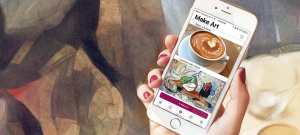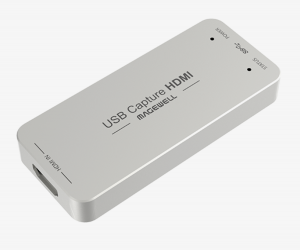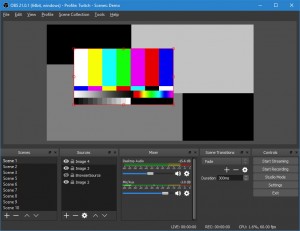Alex Glow, Hackster.io

Cool Tools Show 131: Alex Glow
Our guest this week is Alex Glow. Alex creates electronics videos and tutorials at Hackster.io in San Francisco; she loves building wearable tech, EEG, music, bikes, holograms, and more. Alex grew into hardware as a FIRST Robotics team member, then as a director of the AHA and Noisebridge hackerspaces and Artist in Residence at Autodesk’s Pier 9.
Subscribe to the Cool Tools Show on iTunes | RSS | Transcript | Download MP3 | See all the Cool Tools Show posts on a single page
Show notes:

Pikazo app
“What this app is for is using a neural network to impose Picasso’s visual style on other images. You could take a selfie and make it look like Picasso, it could be a portrait or whatever. In this case it’s basically Polaroids for neural style transfer, which means that you can make one image look like another or like someone else’s style using convolutional neural networks. It takes the structure of your original image, your content, like your selfie or whatever, it takes your face and the visual style of Picasso or Monet or any other image that you can feed it. This is where it gets interesting … I’ve been playing around with using the Arduino circuit diagram to turn things into, basically sort of circuitified versions of what they are, and especially in the context of using traditional ritual symbols like for alchemy, for Nordic runes, for crop circles. Taking those and turning them into something that a machine might produce. It’s really fun.”

USB Capture HDMI
“This is kind of a frustrating tool for me honestly, because it’s what people always ask about when I’m trying to present about something else. I’ll be setting up a video with Raspberry Pi or with a guest in the video studio, and I will pipe the HDMI output from their computer or from the Raspberry Pi or whatever into my computer as a USB webcam using this device. It sounds so simple, but it’s so magical, like the fact that you don’t have to point a camera at a grainy monitor in order to try and capture something from the Pi. It’s a little silver box that has an HDMI port on one side where you plug in an HDMI cable, and then you plug in the other end of that cable to your source such as a Raspberry Pi or your guest’s computer or whatever. On the other end of it, it has a USB port and you basically stick a USB cable into that connected to your computer, and now it’s a webcam. You can also use it just to use your Mac computer or Windows computer or whatever, as a monitor for something else, which is something where I haven’t been able to find another tool that does this. It basically means that you don’t have to lag around a huge monitor.”

Open Broadcasting Studio
“OBS is used for compositing video basically, which is another really awesome tool on its own right. Basically it’s a free open source tool. It’s a lifesaver. I can put in all kinds of different audio inputs and turn them on and off. I can have a persistent setup that basically includes text and logos, and my little face in the corner, and then a number of video sources that I can configure as different websites. There are other ones that other people use. I’ve tried them and to be honest, they kind of sucked. Whenever I try another one it always either required some kind of weird plug-in that would eat all the video that I tried to send to other places on my computer, so I couldn’t use Google Hangouts anymore or something. It was just a nightmare or it was super expensive or it just didn’t have as much power as I wanted. This one is so configurable, you can setup multiple scenes.”

Restream
“The cool thing is I stream from OBS to restream.io, which basically splits it into going to Facebook and YouTube at the same time, it can go to Twitch at the same time as well. I think that’s mostly free. There is a charge for adding extra links … it’s simultaneous streaming on multiple sites.”

3D Hubs
“This is a super cool service, where basically there’s people all over the map who have their own 3D printers at home, and they’ve decided to make a profession out of it. You will send in your file, you upload it to the site, and that’s an STL file or anything that you created from a 3D modeling program, for example Tinkercad or Fusion 360. I use onshape.com a lot, which is a browser-based one, and basically from that modeling program you’ll export your 3D model, and then you basically had to figure out how to print it. If you don’t have your own 3D printer or if you’re not very good with it yet and you need a really pro-level model, then you can upload it to this website, and choose from a list of people to print it for you. Since these are individuals working wherever, there are often a lot of people in your own city who will do it, and you can go and pick it up instead of waiting for delivery.”
Also mentioned:
Archimedes, the AI Robot Owl
My latest project is probably the most ambitious wearable I’ve built (pictured above), and I’m excited to use him to start conversations about how we perceive cuteness and innocence with regard to robot intelligence.
We have hired professional editors to help create our weekly podcasts and video reviews. So far, Cool Tools listeners have pledged $336 a month. Please consider supporting us on Patreon. We have great rewards for people who contribute! – MF
07/13/18





